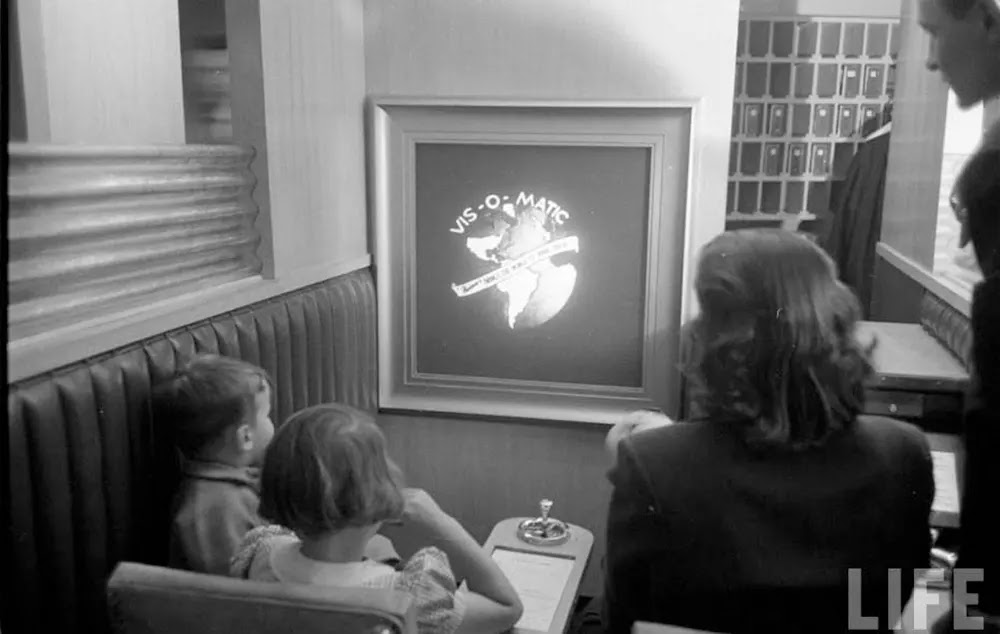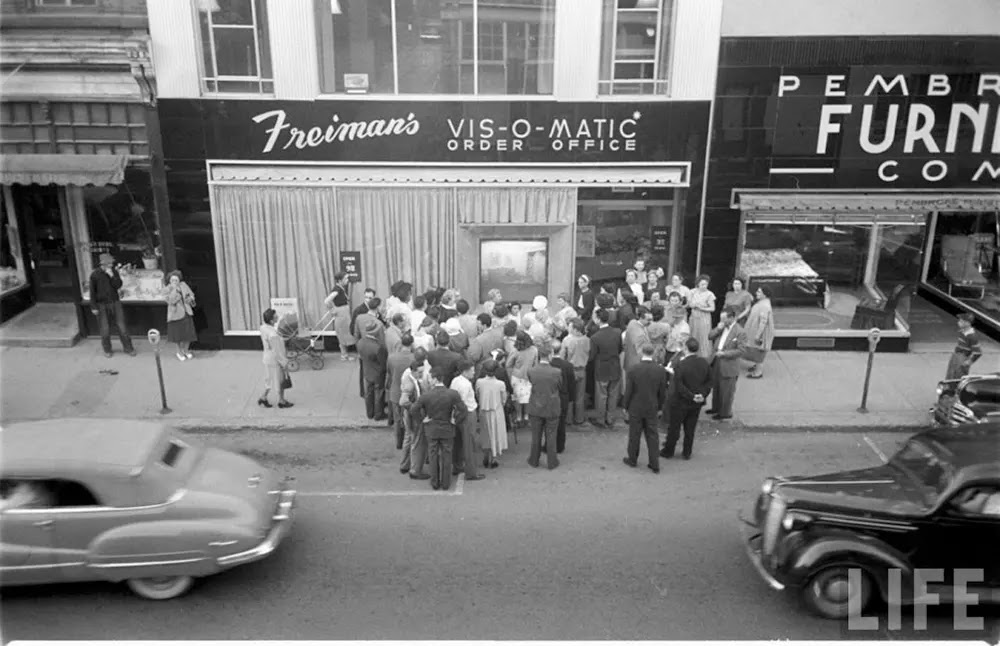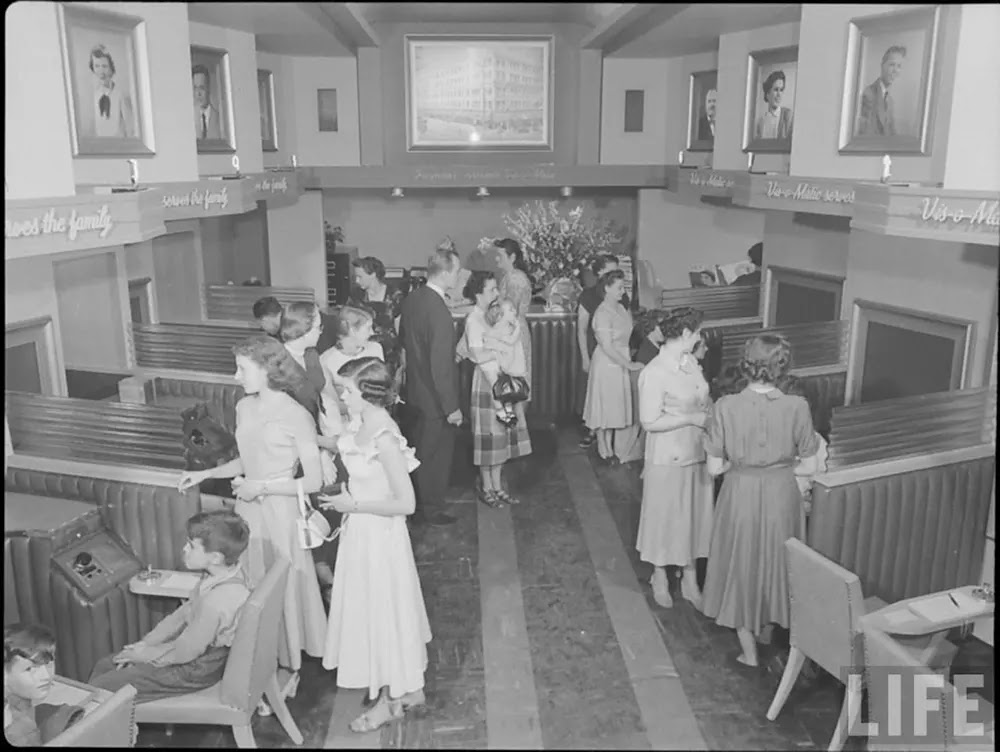Photos of Vis-O-Matic, the pre-Internet online shopping store, 1950s

In the 1950s, visionary business entrepreneur Lawrence Freeman opened a new concept store that tried to reinvent the way people buy things.
The "Wiz-O-Matic" was the Amazon Prime of its era: a store equipped with televisions where customers would sit, order products from a screen, and then go home as the company shipped purchases directly to them.
As the Globe and Mail reports, the Pembroke outpost in Ontario, Canada, "was a small air-conditioned shop on Main Street, with booths and screens on which to display color images of merchandise."
Customers sat in front of one of eight booths with 27-square-inch color TVs. Various product catalogs were stored in libraries similar to microfilm and employees changed the images being loaded onto the screen based on what the customer was looking for.
There were three buttons built into each booth: an "advance" button that proceeded through the catalogue, a "reverse" button that toggled back, and a knob that allowed customers to proceed with a large amount of slides. In total, 3,750 products were digitized and made available for shipment to Pembroke.

When customers settled on a product, they wrote down their order on a notepad, which, as Women's Wear Daily reported, was actually integrated into the booth armrests for easy access. Customers handed the paper over to one of four "sales consultants", who used a teletype, the precursor to the fax, to send it back to Ottawa.
Again, at least according to the official pitch, AJ. According to Freeman, "goods are delivered the next day by mail or express".
On June 14, a week after the Pembroke Vis-O-Matic store opened, Freeman told a local journalist, "Our first experiences show that there's no question, but we can sell anything with this method."
Women's clothing—especially clothing, sportswear and footwear—was the biggest seller on the Vis-O-Matic screen, with clothing for children trailing behind.

Still, Freeman was well aware that his store would not be profitable in the short term. The cost of shipping individual orders approximately 100 miles from Ottawa to Pembroke was too high to offset any benefit unless customers across Canada were placing remote orders. He clarified repeatedly that the Pembroke store was an experiment, and "we will continue to proceed with caution."
There does not appear to have been any further reports on the Vis-O-Matic between 1951 and 1971, when A.J. Freeman was sold to retail giant Hudson's Bay, and most consumer culture historians are not familiar with the innovation.




No comments: